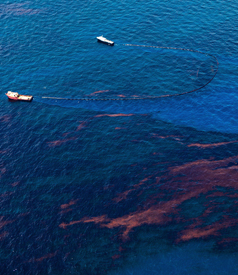Washington – Government scientists wanted to tell Americans early on how bad the BP oil spill could be, but the White House denied their request to make the worst-case scenarios public, a report by staff for the national panel investigating the spill said Wednesday.
The allegation by unnamed government officials, contained in a staff working paper released Wednesday by the National Commission on the BP Deepwater Horizon Oil Spill and Offshore Drilling, is certain to fuel controversy over why the government lowballed flow rates throughout much of the spill, even as independent scientists offered vastly higher — and ultimately more accurate — estimates.
The staff paper does not assign any motive to the administration’s moves but says the underestimating of flow rates “undermined public confidence in the federal government’s response” by creating the impression the government was either incompetent or untrustworthy. The paper said that the loss of trust “fuels public fears.”
Do you like this? Click here to get Truthout stories sent to your inbox every day – free.
BP initially put the spill at 1,000 barrels a day, but never disclosed any data or explained how it got that amount, the report said. In the second week of the spill, the Coast Guard said it could be as much as 5,000 barrels. That remained the government’s estimate until the end of May, even as independent scientists calculated that the rate was much higher.
The government all along had BP’s own estimates of what a worse-case scenario would be, but didn’t disclose it to the public, the report said. BP’s drilling permit put it at 162,000 barrels a day. On April 23 the Coast Guard and NOAA got an updated estimate of 64,000 to 110,000 barrels a day, but it’s unclear whether that information was from BP or how it was derived, the report said. By early May BP lowered its worst-case estimate to 60,000 barrels a day, the report said.
That figure was close to what government scientists later determined was the best estimate for the actual flow. Therefore, the government oil spill response team may have been basing their decision making on a good estimate, the report said. But, it added, “despite the fact that the Unified Command had this information relied on it for operations, and publicly stated that it was operating under a worst-case scenario, the government never disclosed what its operational scenario was.”
Join us in defending the truth before it’s too late
The future of independent journalism is uncertain, and the consequences of losing it are too grave to ignore. To ensure Truthout remains safe, strong, and free, we need to raise $43,000 in the next 6 days. Every dollar raised goes directly toward the costs of producing news you can trust.
Please give what you can — because by supporting us with a tax-deductible donation, you’re not just preserving a source of news, you’re helping to safeguard what’s left of our democracy.
